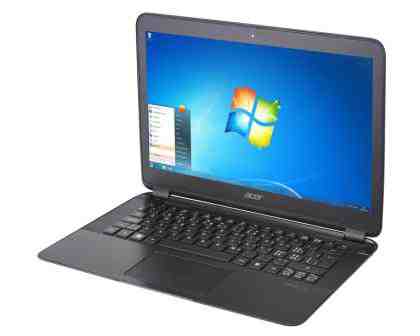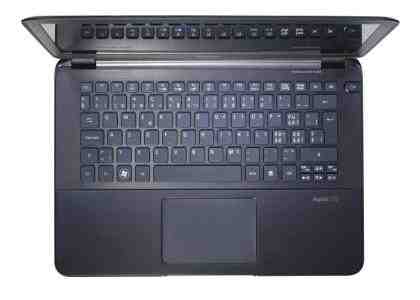Acer Aspire S5 review
Acer might have made budget-oriented workhorses in the past, but its new laptops are much classier affairs. None more so than the Aspire S5, a great-looking Ultrabook built from black brushed aluminium. It’s also the first Ultrabook we’ve seen with a mechanical port bay that raises and lowers at the push of a button.

When in the raised position, the svelte S5 is barely 15mm thick, although you’re only able to use the multiformat card reader and 3.5mm audio jack inputs. Press the button above the keyboard tray and a whole extra set of ports appear from within. You get an HDMI video output, two USB3 ports and a Thunderbolt port – one of the first we’ve seen on a Windows-based laptop. It’s a clever way to reduce the chassis size, although the awful grinding noise it makes when in motion doesn’t exactly scream high-class. Plus, our review sample often remained stuck in the open position.

It’s a shame, as the S5 is otherwise very comfortable to use for everyday tasks. This is mainly thanks to the comfortable Chiclet-style keyboard, which has minimal travel in each key because of the thin chassis, but very springy actions that provide plenty of tactile feedback. All the QWERTY keys are full-size and sensibly spaced apart, but we were disappointed with the lack of a backlight which will make it difficult to keep working in low lighting conditions.

Slightly less impressive was the all-in-one touchpad, which is a reasonable size but has little in the way of tactile feedback. The buttons are shallow, sometimes making it difficult to tell if your clicks have registered or not. Right clicks are relegated to the very corner of the touchpad, although multitouch gestures worked reasonably well and the touchpad itself was sensitive enough to make moving around the Windows desktop a breeze.

The display is a definite low point. Compared to the similarly priced Samsung Series 9, which has a 1,600x900 display, the 1,366x768 resolution panel that Acer has used in the S5 is arguably sub-par for a high-end Ultrabook. There’s a huge amount of screen tilt, but the TN panel technology suffers from disappointing viewing angles and the glossy finish makes it even harder to use underneath overhead lighting or in direct sunlight. The backlight was at least bright and even, producing vibrant images that were colourful and held up well when playing video, but it simply wasn’t up to the standard we expect in a laptop costing over £1,000.
Audio was predictably average too, with reasonably loud yet tinny sound coming from the down-firing stereo speakers. The labels might read “Dolby home Theatre” and “Professionally Tuned”, but the lack of bass and sharp high-end meant we were soon reaching for a pair of headphones to listen to music.
